 Indie publishing, short for independent publishing, has revolutionized the world of books and authors. It’s a pathway where writers take control of the entire publishing process, from writing to marketing, without the involvement of traditional publishing houses. This approach offers creative freedom, higher royalties, and direct engagement with readers.
Indie publishing, short for independent publishing, has revolutionized the world of books and authors. It’s a pathway where writers take control of the entire publishing process, from writing to marketing, without the involvement of traditional publishing houses. This approach offers creative freedom, higher royalties, and direct engagement with readers.
In the realm of indie publishing, authors are entrepreneurs, navigating the complexities of editing, cover design, and distribution to bring their work to the world. It’s a realm where innovation thrives, allowing diverse voices and unique stories to find their audience without conforming to mainstream trends. Embracing indie publishing means embracing autonomy and the opportunity to shape one’s literary destiny.
What Is Indie Publishing
Indie publishing, short for independent publishing, revolutionizes the book industry. In this realm, writers take charge of the entire publishing process, from inception to marketing, bypassing traditional publishing houses. Authors in indie publishing function as entrepreneurs, overseeing editing, cover design, and distribution to deliver their creations to readers. This method provides artists with creative liberty, increased royalties, and the opportunity for distinct voices and narratives to find audiences without adhering to mainstream norms. Opting for indie publishing entails embracing autonomy and molding one’s literary journey.
Advantages of Indie Publishing
 Indie publishing offers significant advantages to authors, providing them with creative control and higher royalties compared to traditional publishing models.
Indie publishing offers significant advantages to authors, providing them with creative control and higher royalties compared to traditional publishing models.
In indie publishing, authors have the freedom to make decisions about every aspect of their book, including content, cover design, formatting, and marketing strategies. They retain full control over the creative process, allowing them to stay true to their vision without external influences or constraints. This autonomy enables writers to express their unique voice and ideas without compromising commercial interests or market trends.
One of the key benefits of indie publishing is the potential for higher royalties. Authors can earn a more significant percentage of the book’s revenue as they bypass traditional publishing contracts that involve sharing profits with publishing houses.
Challenges in Indie Publishing
Indie publishing, despite its many benefits, comes with certain challenges that authors need to navigate. Below are some common hurdles faced by those in the indie publishing industry:
- Limited Resources: Indie authors often operate on shoestring budgets, making it challenging to invest in professional editing, cover design, and marketing services.
- Market Saturation: With the rise of self-publishing platforms, the market is flooded with books, making it difficult for indie authors to stand out among the competition.
- Distribution Constraints: Independent authors may face hurdles in getting their books into physical stores due to distribution limitations and lack of access to established networks.
- Time Management: Juggling the various aspects of publishing—such as writing, editing, and marketing—can be time-consuming and overwhelming for indie authors who don’t have a dedicated team to support them.
Navigating these challenges requires resilience, strategic planning, and a deep understanding of the indie publishing landscape. Despite these obstacles, many indie authors find success by leveraging their creativity and determination to overcome these hurdles in the competitive publishing world.
Indie Publishing vs. Traditional Publishing
Indie publishing and traditional publishing represent distinct pathways for authors to bring their work to readers. In the indie publishing sphere, authors have full control over every aspect of the publishing process, from content creation to distribution. On the other hand, traditional publishing involves authors signing with established publishing houses that take care of tasks such as editing, design, printing, and marketing.
- Control: Indie authors dictate every decision, while traditional authors follow the publisher’s guidelines.
- Revenue: Indies typically earn higher royalties per sale compared to traditional authors.
- Flexibility: Indies can experiment with diverse genres and formats more freely.
- Passion: Both indie and traditional authors share a deep love for writing.
- Craftsmanship: Both strive for high-quality content that resonates with readers.
- Persistence: Success in either field requires dedication and continual effort.
Indie publishing offers authors a pathway to creative control, higher earnings, and diverse reader engagement. Despite challenges like resource limitations and market saturation, indie authors navigate these obstacles with resilience and strategic approaches.

